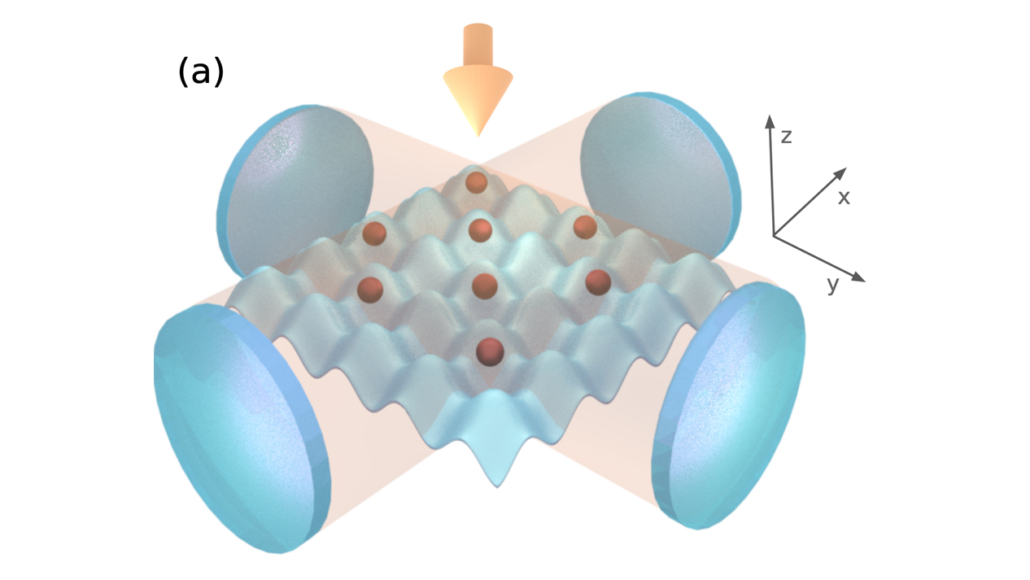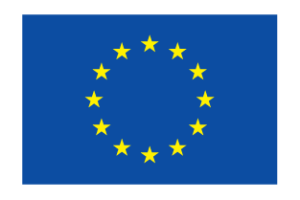Novel topological properties of matter emerge from an ultra-cold atom-cavity system
An international team of researchers reports on a new method that permits inducing symmetry-protected higher-order topology through a spontaneous symmetry-breaking mechanism in a two-dimensional system of ultra-cold bosonic atoms inside a cavity.
The Topological Revolution in Physics: Unveiling the Secrets of Quantum Matter
Topology is a field of mathematics that studies the properties of geometric objects that are preserved under continuous deformations. In physics, topology provides a framework for understanding key properties of physical systems, which has led to the discovery of new materials with unique properties.
Since researchers discovered topological materials, unique for their non-local properties, topology has taken center stage in fundamental and applied physics research. In recent years, researchers have made significant progress in expanding our understanding of phases of matter. They now incorporate the concept of topology and its connection to the underlying symmetries of quantum systems. This has led to a comprehensive classification of non-interacting topological systems. However, many unconventional topological phases still defy the current paradigm, posing challenges and questions that demand fresh perspectives and solutions. For example, we need to understand how topology interacts with interactions and study higher-order topological insulators, which expand the bulk-boundary correspondence. Currently, researchers propose and discover these phases in a wide array of systems, including electronic systems, photonics, and cold atoms in optical lattices.
Quantum simulators built from cold atoms in optical lattices have become a focal point in the study of topological materials, largely due to their adaptability. Moreover, researchers leverage these simulators to investigate systems where particle interactions surpass the limits of current computational approaches. Intriguingly, the interplay between interactions and topology can give rise to captivating phenomena. For instance, the combination of interaction-induced symmetry breaking and symmetry protection can generate delocalized fractional charges, which are not observed in non-interacting systems. Consequently, cold atom experiments have emerged as prime candidates for studying interacting topological systems. However, it’s crucial to note that advanced numerical methods are still necessary to benchmark these experiments effectively.
Experimental Setup for Atom-Cavity System

Higher-Order Topology in Atom-Cavity Systems
In the recent study published in Physical Review Letters, ICFO researcher Joana Fraxanet, led by ICREA Prof. at ICFO Maciej Lewenstein, Dynamite project coordinator, in collaboration with Daniel Gonzalez-Cuadra from IQOQI, Alexandre Dauphin from PASQAL and Luca Barbiero from Politecnico de Torino and also team member of Dynamite, report on a readily available experimental protocol to induce symmetry-protected higher-order topology through a spontaneous symmetry-breaking mechanism in an atom-cavity system.
In their study, the scientists used tensor-network based numerical techniques to investigate a system of ultra-cold bosonic atoms coupled to two cavities. Counter-propagating laser beams generate an optical lattice, and the atoms are trapped in its lowest energy band. By adding two optical cavities, the scientists enhance the probability of photon-mediated interactions between the atoms, leading to effective infinite-range interactions. For the regimes of interest, these interactions induce a Peierls transition, which spontaneously breaks the translational symmetry of the system. The resulting pattern opens a topological gap, leading to a higher-order topological phase hosting corner states. The authors present a detailed protocol for the adiabatic preparation of this higher-order topological phase. Scientists can readily implement this protocol using existing ultracold atom quantum simulators. Therefore, the study opens the path towards the realization of two-dimensional interaction-induced topological phases and the observation of Peierls transitions in dimensions larger than one.
Future Directions and Broader Implications
As Joana Fraxanet comments, “we would like to extend the setup to include multimode cavities, allowing to generate atom-photon topological defects. These defects would not only generalize the topological solitons and fractionalized quasi-particles found in the Su-Schrieffer-Heeger model to two dimensions, but also open new avenues of exploration. Furthermore, by exploring the regime of softcore bosons, we expect to find plaquette-ordered supersolid phases.” The results presented in this study thus represent a significant step forward in understanding interacting topological phenomena, which in turn, can have important applications in quantum information processing and the discovery of novel materials. In addition, these results are relevant to a broad community of theoretical and experimental researchers working on topological matter, ultracold atoms experiments, quantum optics, and solid-state physics.
Reference article
Fraxanet, J., Dauphin, A., Lewenstein, M., Barbiero, L., & González-Cuadra, D. (2023). Higher-Order Topological Peierls Insulator in a Two-Dimensional Atom-Cavity System. Physical Review Letters, 131(26), 263001. https://doi.org/10.1103/PhysRevLett.131.263001

 This project was funded within the QuantERA II Programme that has received funding from the European Union’s Horizon 2020 research and innovation programme under Grant Agreement No 101017733
This project was funded within the QuantERA II Programme that has received funding from the European Union’s Horizon 2020 research and innovation programme under Grant Agreement No 101017733
